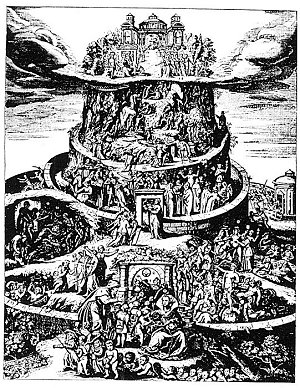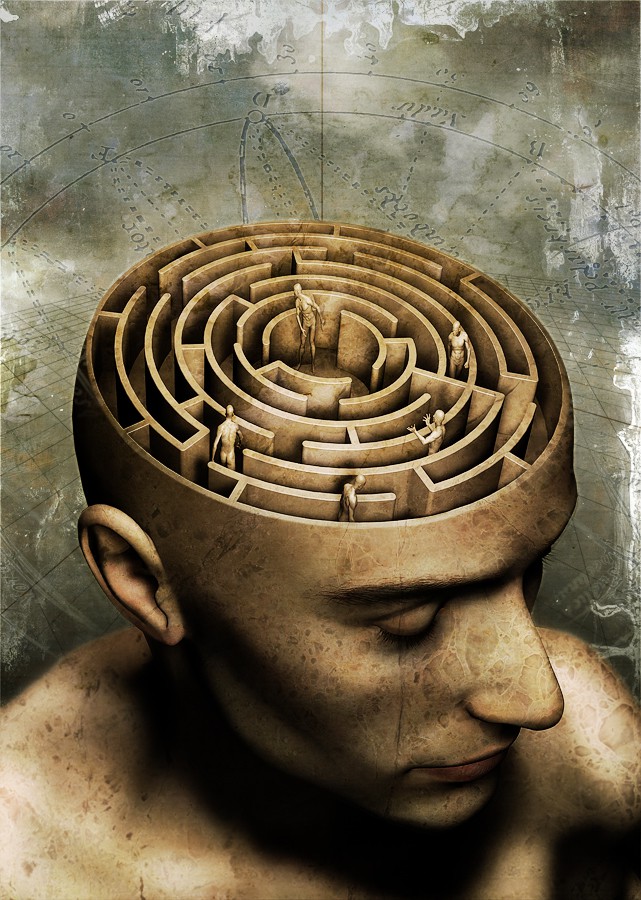p. 197
DID that divine knowledge which constituted the supreme possession of the pagan priestcrafts survive the destruction of their temples? Is it yet accessible to mankind, or does it lie buried beneath the rubbish of ages, entombed within the very sanctuaries that were once illuminated by its splendor? “In Egypt,” writes Origen, “the philosophers have a sublime and secret knowledge respecting the nature of God. What did Julian imply when he spoke of the secret initiations into the sacred Mysteries of the Seven-Rayed God who lifted souls to salvation through His own nature? Who were the blessed theurgists who understood them profundities concerning which Julian dared not speak? If this inner doctrine were always concealed from the masses, for whom a simpler code had been devised, is it not highly probable that the exponents of every aspect of modern civilization–philosophic, ethical, religious, and scientific-are ignorant of the true meaning of the very theories and tenets on which their beliefs are founded? Do the arts and sciences that the race has inherited from older nations conceal beneath their fair exterior a mystery so great that only the most illumined intellect can grasp its import? Such is undoubtedly the case.
Albert Pike, who has gathered ample evidence of the excellence of the doctrines promulgated by the Mysteries, supports his assertions by quoting from the writings of Clement of Alexandria, Plato, Epictetus, Proclus, Aristophanes, and Cicero, all of whom unite in lauding the high ideals of these institutions. From the unqualified testimony of such reputable authorities no reasonable doubt can exist that the initiates of Greece, Egypt, and other ancient countries possessed the correct solution to those great cultural, intellectual, moral, and social problems which in an unsolved state confront the humanity of the twentieth century. The reader must not interpret this statement to mean that antiquity had foreseen and analyzed every complexity of this generation, but rather that the Mysteries had evolved a method whereby the mind was so trained in the fundamental verities of life that it was able to cope intelligently with any emergency which might arise. Thus the reasoning faculties were organized by a simple process of mental culture, for it was asserted that where reason reigns supreme, inconsistency cannot exist. Wisdom, it was maintained, lifts man to the condition of Godhood, a fact which explains the enigmatical statement that the Mysteries transformed “roaring beasts into divinities.”
The preeminence of any philosophical system can be determined only by the excellence of its products. The Mysteries have demonstrated the superiority of their culture by giving to the world minds of such overwhelming greatness, souls of such beatific vision, and lives of such outstanding impeccability that even after the lapse of ages the teachings of these individuals constitute the present spiritual, intellectual, and ethical standards of the race. The initiates of the various Mystery schools of past ages form a veritable golden chain of supermen and superwomen connecting heaven and earth. They are the links of that Homeric “golden chain” with which Zeus boasted he could bind the several parts of the universe to the pinnacle of Olympus. The sons and daughters of Isis are indeed an illustrious line–founders of sciences and philosophies, patrons of arts and crafts, supporting by the transcendency of their divinely given power the structures of world religions erected to do them homage. Founders of doctrines which have molded the lives of uncounted generations, these Initiate-Teachers bear witness to that spiritual culture which has always existed–and always will exist–as a divine institution in the world of men.
Those who represent an ideal beyond the comprehension of the masses must face the persecution of the unthinking multitude who are without that divine idealism which inspires progress and those rational faculties which unerringly sift truth from falsehood. The lot of the Initiate-Teacher is therefore almost invariably an unhappy one. Pythagoras, crucified and his university burned; Hypatia, torn from her chariot and rended limb from limb; Jacques de Molay, whose memory survives the consuming flame; Savonarola, burned in the square of Florence; Galileo, forced to recant upon bended knee; Giordano Bruno, burned by the Inquisition; Roger Bacon, compelled to carry on his experiments in the secrecy of his cell and leave his knowledge hidden under cipher; Dante Alighieri, dying in exile from his beloved city; Francis Bacon, patient. under the burden of persecution; Cagliostro, the most vilified man of modern times–all this illustrious line bear unending witness of man’s inhumanity to man. The world has ever been prone to heap plaudits upon its fools and calumny upon its thinkers. Here and there notable exceptions occur, as in the case of the Comte de St.-Germain, a philosopher who survived his inquisitors and through the sheer transcendency of his genius won a position of comparative immunity. But even the illustrious Comte–whose illumined intellect merited the homage of the world–could not escape being branded an impostor, a charlatan, and an adventurer. From this long fist of immortal men and women who have represented the Ancient Wisdom before the world, three have been chosen as outstanding examples for more detailed consideration: the first the most eminent woman philosopher of all ages; the second the most maligned and persecuted man since the beginning of Christian Era; the third the most brilliant and the most successful modern exponent of this Ancient Wisdom.
HYPATIA
Sitting in the chair of philosophy previously occupied by her father, Theon the mathematician, the immortal Hypatia was for many years the central figure in the Alexandrian School of Neo-Platonism. Famed alike for the depth of her learning and the charm of her person, beloved by the citizens of Alexandria, and frequently consulted by the magistrates of that city, this noble woman stands out from the
THE TABLE OF CEBES.
From Vænius’ Theatro Moral de la Vida Humana. There is legend to the effect that the Tablet of Cebes, a dialogue between Cebes and Gerundio, was based upon an ancient table set up in the Temple of Kronos at Athens or Thebes which depicted the entire progress of human life. The author of the Tablet of Cebes was a disciple of Socrates, and lived about 390 B.C. The world is represented as a great mountain. Out of the earth at the base of it come he myriads of human creatures who climb upward in search of truth and immortality. Above the clouds which conceal the summit of the mountain is the goal of human attainment–true happiness. The figures and groups are arranged as follows: (1) the door of the wall of life; (2) the Genius or Intelligence; (3) deceit (4) opinions, desires, and pleasures; (5) fortune; (6) the strong; (7) venery, insatiability, flattery; (8) sorrow; (9) sadness; (10) misery; (11) grief, (12) rage or despair; (13) the house of misfortune; (14) penitence; (15) true opinion; (16) false opinion; (17) false doctrine; (18) poets, orators, geometers, et. al.; (19) incontinence, sexual indulgence, and opinion; (20) the road of the true doctrine (21) continence and patience; (22) the true doctrine; (23) truth and persuasion; (24) science and the virtues; (25) happiness, (26) the highest (first) pleasure of the wise man; (27) the lazy and the strays.

Moe is the founder of GnosticWarrior.com. He is a father, husband, author, martial arts black belt, and an expert in Gnosticism, the occult, and esotericism.


![How Augustine admonished the bishops of the Britons on behalf of Catholic peace, and to that end wrought a heavenly miracle in their presence; and of the vengeance that pursued them for their contempt [Circ. 603 A.D.] | Book 2 | Chapter 2 How Augustine admonished the bishops of the Britons on behalf of Catholic peace, and to that end wrought a heavenly miracle in their presence; and of the vengeance that pursued them for their contempt [Circ. 603 A.D.] | Book 2 | Chapter 2](https://www.gnosticwarrior.com/wp-content/plugins/contextual-related-posts/default.png)
